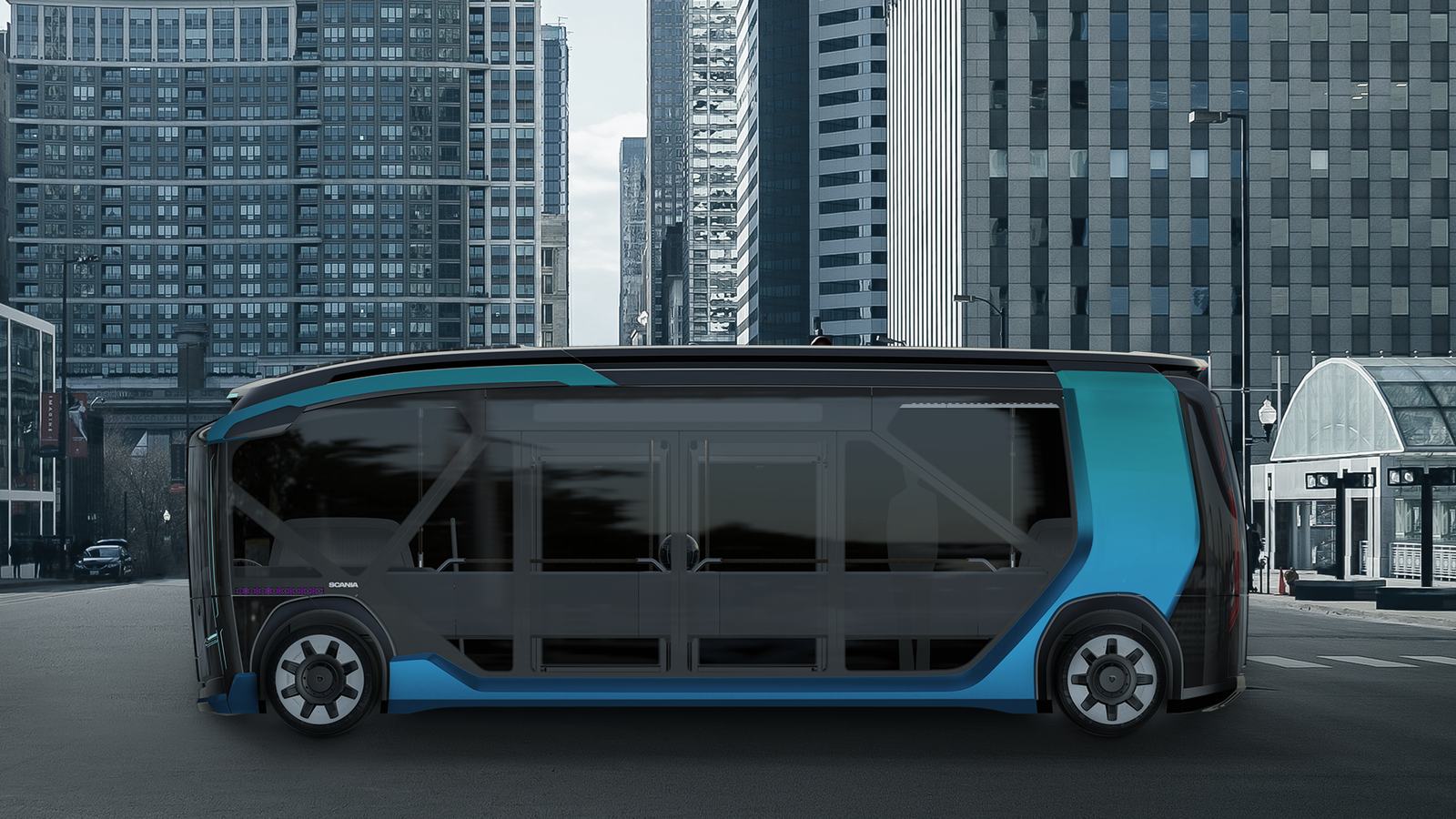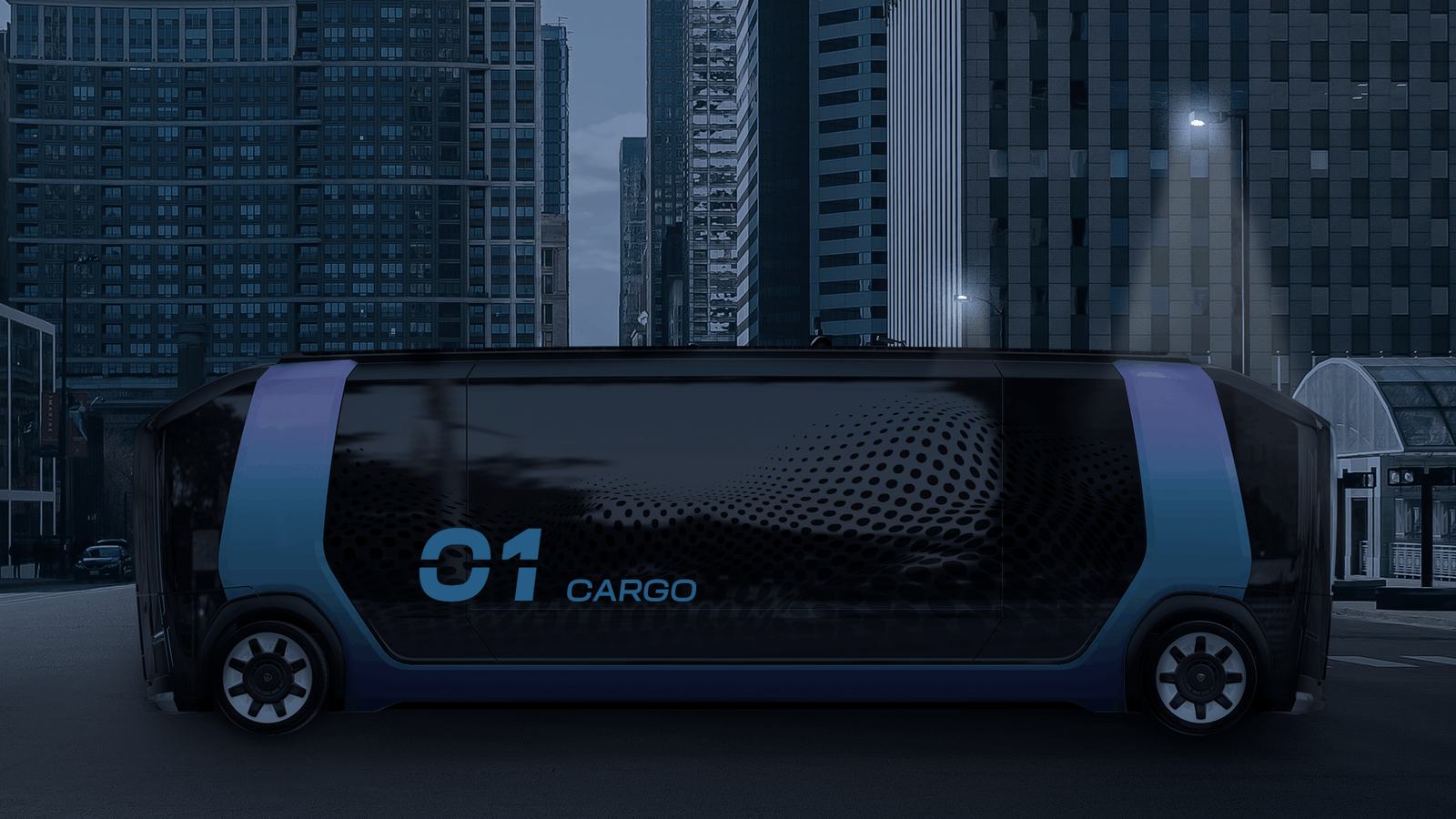SCANIA
Company presents its new modular electric vehicle that transports people and urban waste
Serving as the foundation of electric vehicles launched by everyone from startups to massive global automakers, the skateboard chassis has become a staple of the auto industry. But Swedish commercial vehicle and transport brand Scania is exploring something that's much more than a hoverboard chassis. Its NXT autonomous electric vehicle concept uses detachable front and rear axles the basis of a modular vehicle system that can quickly go from dropping kids to school to dropping garbage at the dump.
For decades, modular design has been woven into Scania's DNA, and now the company is projecting that modularity into the future. The NXT concept takes a look at a potential electric-powered self-driving vehicle to hypothetically be implemented sometime around 2030.
 In developing the NXT, Scania looked at two pressing issues of urban transportation systems: congestion and pollution. It believes its zero-emissions multipurpose work vehicle could pull emissions out of the air and large trucks and buses off the road.
In developing the NXT, Scania looked at two pressing issues of urban transportation systems: congestion and pollution. It believes its zero-emissions multipurpose work vehicle could pull emissions out of the air and large trucks and buses off the road.
 In developing the NXT, Scania looked at two pressing issues of urban transportation systems: congestion and pollution. It believes its zero-emissions multipurpose work vehicle could pull emissions out of the air and large trucks and buses off the road.
In developing the NXT, Scania looked at two pressing issues of urban transportation systems: congestion and pollution. It believes its zero-emissions multipurpose work vehicle could pull emissions out of the air and large trucks and buses off the road.
"Currently, flows in cities are far from being optimized goods are delivered during the morning rush hour while most people are also on the move," Scania says. "Meanwhile, commercial transportation is largely barred from city centers during nights, when people are asleep."
Scania replaces that inefficient system by pulling commercial vehicles off roads during commute hours. Instead, its single drive unit powers different vehicle bodies - "functional modules," in Scania parlance - during different times of day. In its particular vision, the independent front and rear drive axles pair with bus, delivery truck and recycling truck bodies, but it is not hard to see how the system could be applied to other vehicle types.
The axles include integrated drive and steering systems, while the bodies carry the battery pack, autonomous-driving hardware and interior suited for the particular task. Each vehicle battery charges while its body is inactive, creating an efficient system in which the batteries are always ready to go when paired with the axles.
Throughout the day, the drive axles are switched between the different bodies, ensuring that the large vehicles are not flooding roadways at the exact same time. The system could bring commuters to work in the morning, collect garbage in the early afternoon before rush hour, bring those commuters back home, and deliver packages in the evening or overnight.
Scania's vision is similar to modular commercial EV concepts from companies like Panasonic and Rinspeed, but on a larger scale capable of moving dozens of people and large amounts of cargo. The detachable axles are also different from the usual skateboard + topper module, adding some versatility in that they could underpin vehicles with various wheelbase requirements.
Scania's vision is similar to modular commercial EV concepts from companies like Panasonic and Rinspeed, but on a larger scale capable of moving dozens of people and large amounts of cargo. The detachable axles are also different from the usual skateboard + topper module, adding some versatility in that they could underpin vehicles with various wheelbase requirements.
Rather than just roll out a press release and fancy animated video, Scania spent two years building a 26-ft (8-m) bus concept. Constructed from composite, the bus cabin manages to squeeze 55 passengers in, front to back. The 162-kWh battery pack is mounted below the floor, offering an estimated 152-mi (245-km) range. A highly efficient infrared heating system and roof-mounted solar panels help the bus get the most distance out of each charge, while the four-wheel steering system helps it better maneuver city streets and corners.In terms of autonomous hardware, the bus relies on a 360-degree array of cameras, radar and LIDAR. Meanwhile, other systems convey important information to passengers. A touch-activated orb inside the entry greets each person as he or she boards, providing stop information. It also serves as a communications tool for someone who needs to speak with a human operator. The ceiling lights announce stops and starts, and an alert system warns disembarking passengers of traffic hazards. A separate warning system communicates with outside pedestrians and cyclists.
The NXT bus made its debut at this week's UITP Global Public Transport Summit in Stockholm, where it undoubtedly sparked much discussion about the future of modular electric transportation.
"This vehicle will provide invaluable tangible data in our continued development of electrified autonomous vehicles," says Robert Sjödin, NXT Project Manager.
Scania admits that the system relies on technologies not yet developed, which is why it framed it as a concept from 11 years in the future. Such a system would ultimately require in-depth collaboration between businesses, government, citizens and other parties.
Source: Scania
"This vehicle will provide invaluable tangible data in our continued development of electrified autonomous vehicles," says Robert Sjödin, NXT Project Manager.
Scania admits that the system relies on technologies not yet developed, which is why it framed it as a concept from 11 years in the future. Such a system would ultimately require in-depth collaboration between businesses, government, citizens and other parties.
Source: Scania



Nenhum comentário:
Postar um comentário